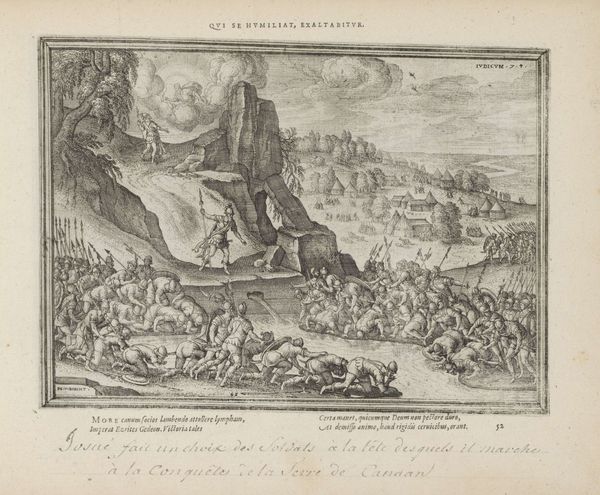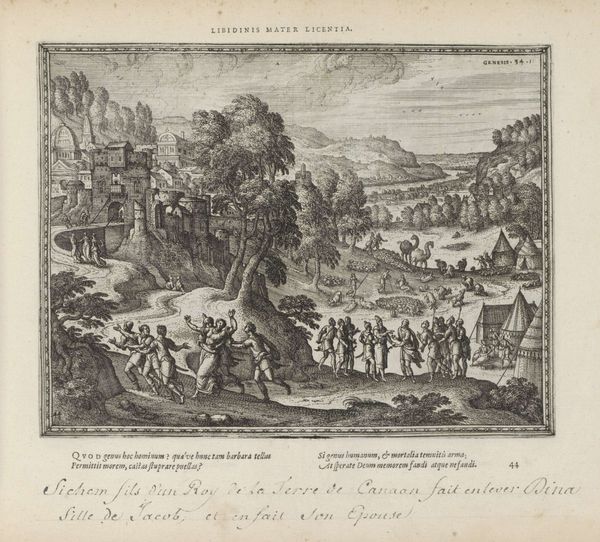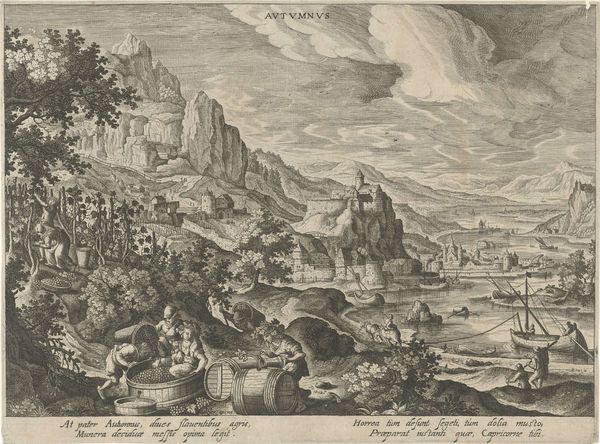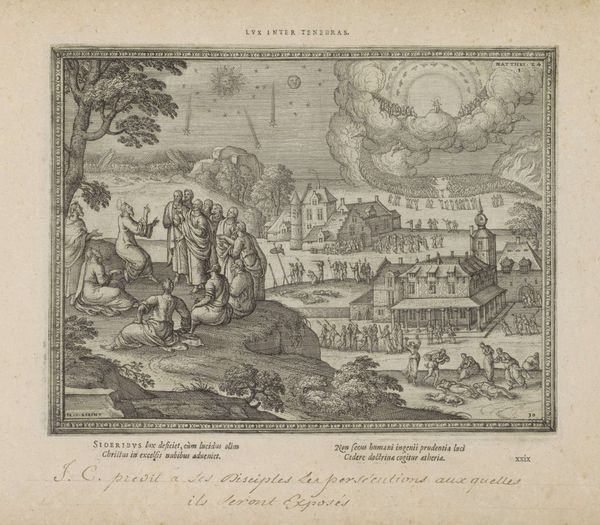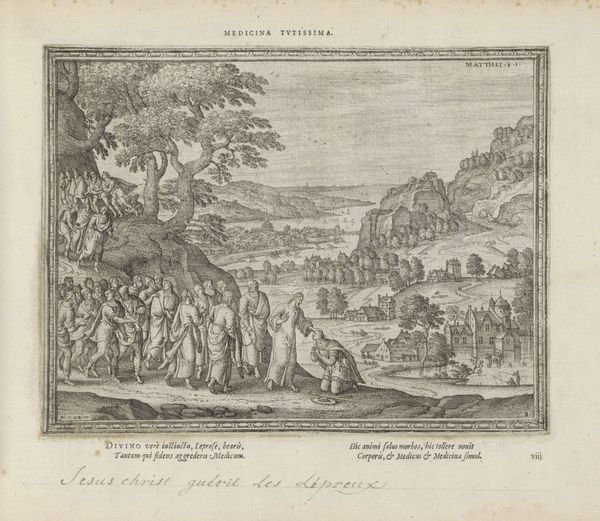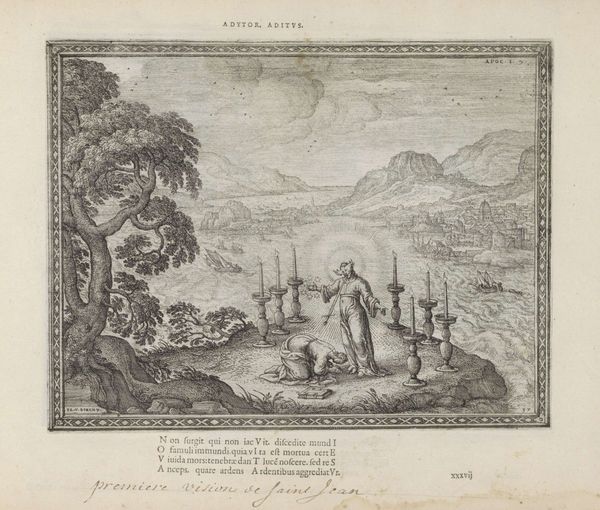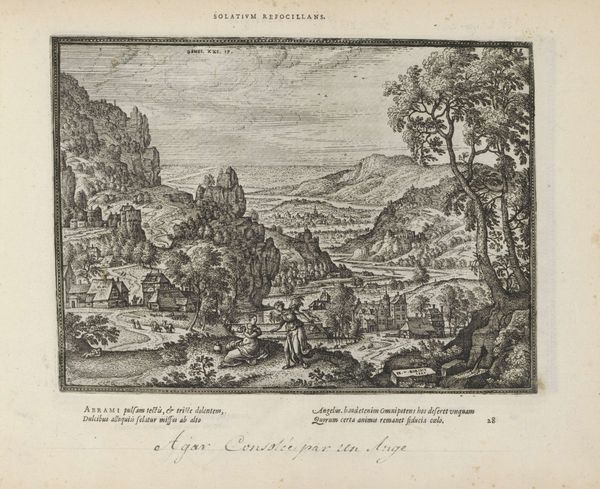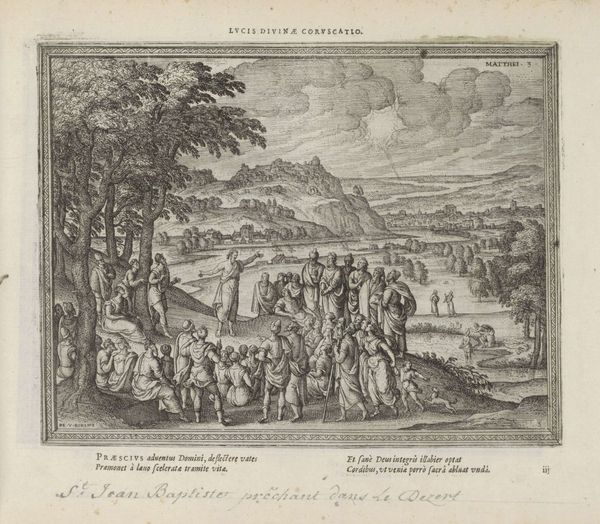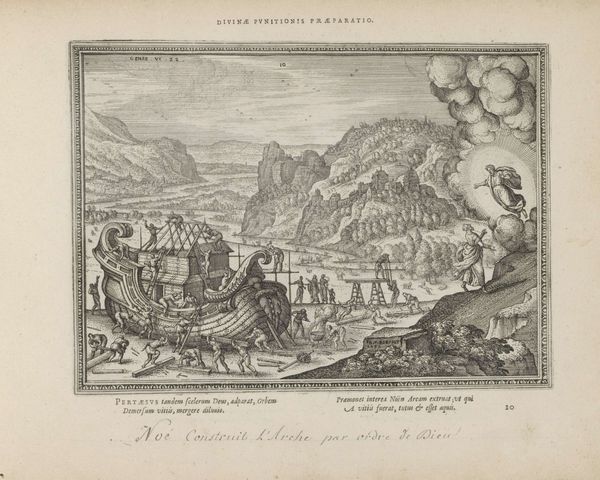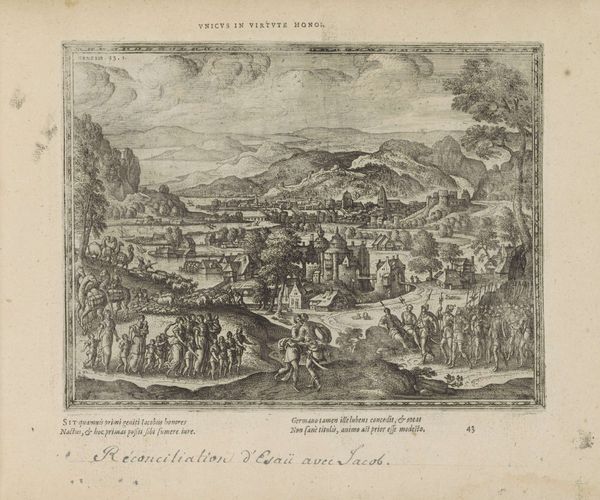
print, etching, engraving
#
narrative-art
#
baroque
# print
#
etching
#
landscape
#
figuration
#
history-painting
#
engraving
Dimensions: height 183 mm, width 253 mm
Copyright: Rijks Museum: Open Domain
Curator: Here we have Pieter van der Borcht the Elder's print, "Zondvloed," created between 1582 and 1613. It's currently held at the Rijksmuseum. What strikes you first about this deluge? Editor: Utter chaos, visually rendered! The overwhelming surge of water and the figures desperately clinging to anything – it speaks to the terror and helplessness in the face of natural disaster. Curator: Indeed. As an engraving and etching, it's interesting how effectively he captures that sense of a world dissolving. The sharp lines heighten the drama, in a style you might connect with Baroque sensibilities. Remember, prints like this circulated widely, influencing popular understanding and anxieties. Editor: I’m particularly drawn to how Van der Borcht has positioned the figures. Note how many are trying to reach higher ground or clutching onto trees, a desperate striving against an inevitable fate. The water dominates, an all-consuming entity, but there are rays of sunlight too—a symbolic tension. Curator: It’s a deliberate choice to include those beams, echoing the hope even in catastrophe found in religious narrative of the deluge. These images had profound influence on societal understandings of divine justice, or injustice, in their time. The print format allows access and repeated engagement to this kind of religious and moral concepts. Editor: Look at the animals, too – the elephant almost submerged with people clinging to it. It underlines the universality of the catastrophe, the destruction extending to the innocent. Curator: That blending of genres—history painting with elements of landscape and figuration—became popular in the representation of significant historical events in the early modern period. It offered artists ways to convey narrative scope and also connect them with the more well known religious concepts in those periods. Editor: Considering its original context, this print feels less like a literal depiction and more like an allegorical reflection on human fragility. The symbols become emotional shorthand. Curator: Exactly! We have to understand the impact it would have had then, in a world often plagued by natural disasters and outbreaks. The print provided an image for society to look to while understanding morality during periods of intense difficulty. Editor: This look into humanity struggling to survive definitely makes one think! Curator: I concur, reflecting on its context reminds us of enduring themes in art as representations of the enduring realities of humanity.
Comments
No comments
Be the first to comment and join the conversation on the ultimate creative platform.

